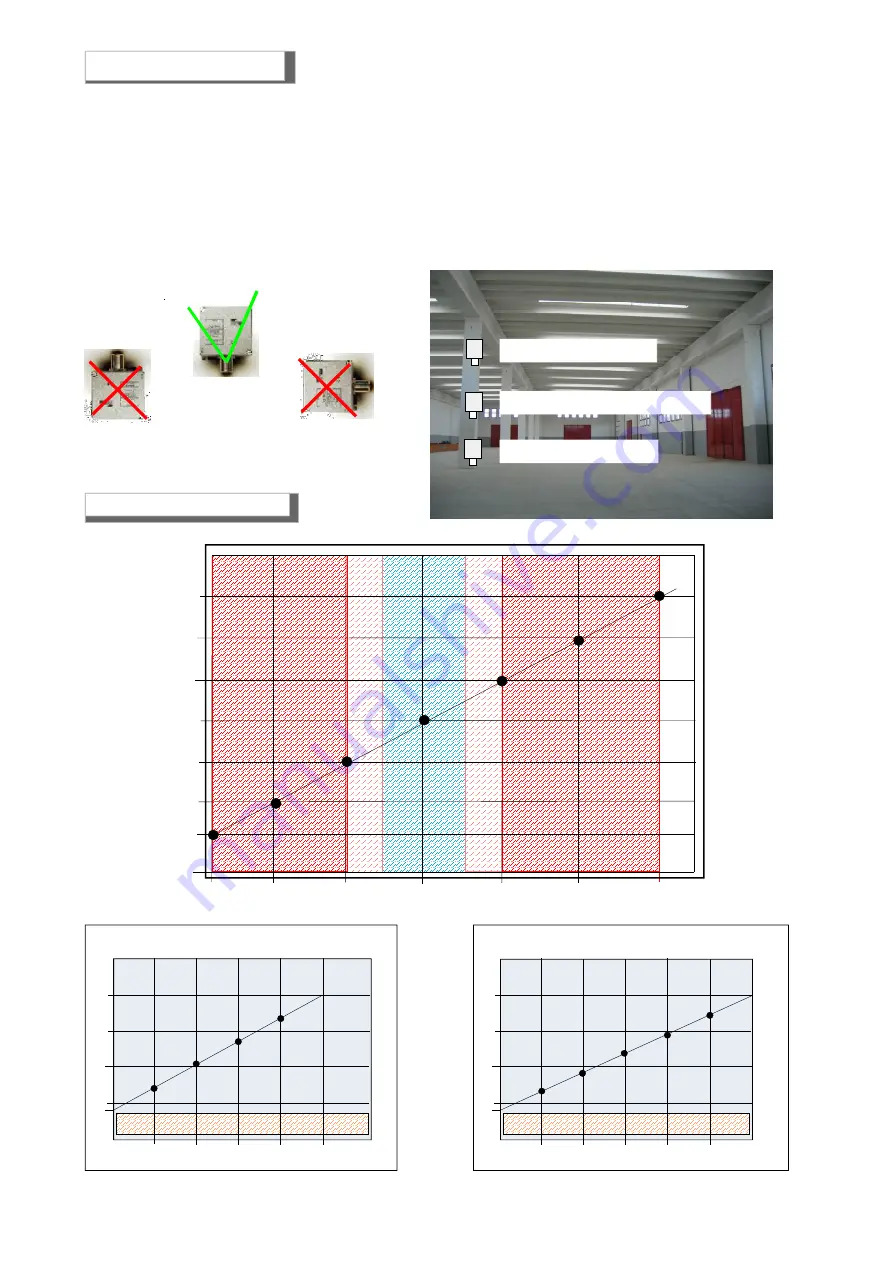
The positioning of the probe is a factor of crucial importance for the correct functioning of gas detection.
In order to obtain the maximum results from an appliance and minimize the probabilities of false alarms, we
recommend to follow this diagram and to keep in mind the following general rules.
The remote probe must be located at different heights, according to the type of gas.
These heights are:
- 30 cm from the lowest point of the floor in order to detect heaavy gases
:
LPG, gasoline, Alcohol,
White spirit, Ethanol, Acetone, Chlorine
- 30 cm from the highest point of the ceiling in order to detect light gases:
Methane, Ammonia, Acetylen,
H ydro gen
- The probe should not be placed near the appliances to be controlled (boilers, burners, industrial kitchens,
etc.) but on the opposite wall.
- The probe should not be affected by smoke, vapour, etc. as they could distort their measurement. It must
be placed away from sources of heat, suction fans, ventilation fans.
Positioning of the Probe
Page 4
Detection Diagrams Data
NO !
NO !
30 cm.
Light Gases
Light medium
gas volatile
30 cm.
Heavy Gases
YES
ppm
0 50 100 150 200 250 300
6,7
Diag ram of Toxic Ga s Detec tion
0
4
5
1
0
1
5
2
0
7,2
20
m A
li nea r +/ - 5 %
Fault zone
9,3
12
14,6
17,3
Diagram of Explosive Gas Detection
0 4% 8% 12% 16% 20%
0
4
5
1
0
1
5
2
0
7,2
10,4
13,6
16,8
20
m A
linear +/-5%
L . I . E .
Fault zone
0 18,5 19,5 20,9 22,5 23,5 25.0 %vol
0
4
1
5
,8
1
6
,5
1
7
,4
1
8
,4
1
9
,4
2
0
m
A
O
x
y
g
e
n
N
o
rm
a
l
le
v
e
l
P
re
-a
la
r
m
P
re
-a
la
r
m
D
e
fi
c
ie
n
c
y
O
x
y
g
e
n
a
la
rm
E
x
c
e
s
s
O
x
y
g
e
n
a
la
rm

























